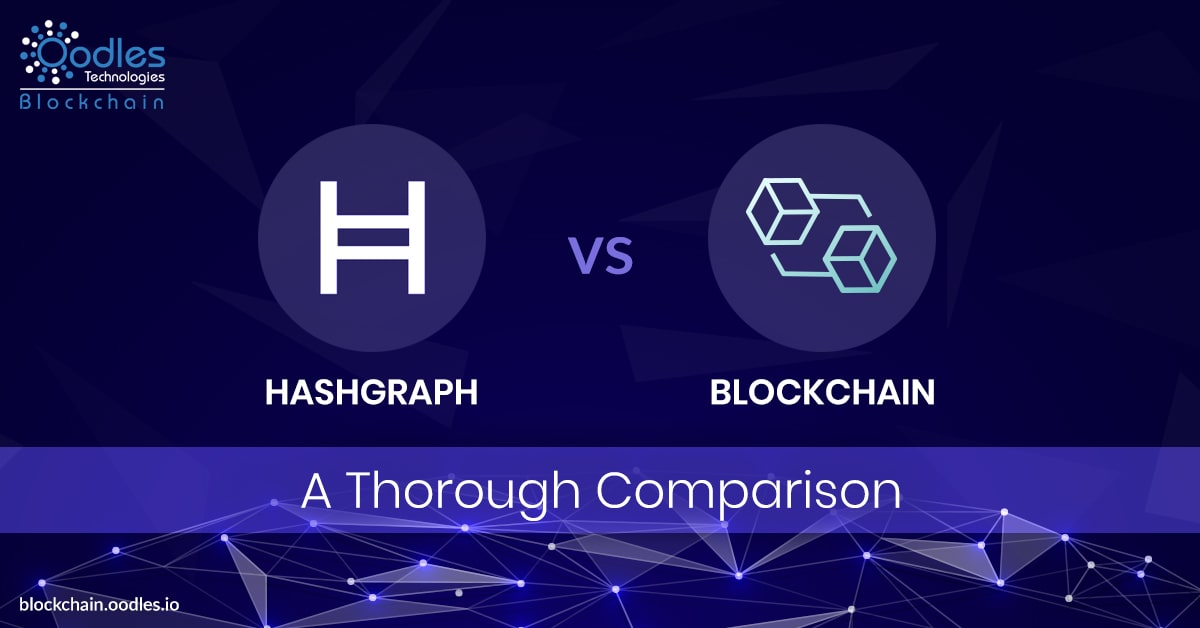-
Hedera Hashgrpah has come into existence as Blockchain's adversary. And now, people are asking whether Hedera Hashgraph will soon rival Blockchain to be the next game-changer in the world of crypto. The unprecedented rise of this nascent technology is due to the limitations of blockchain technology. Although blockchain is still the most well-known distributed ledger technology at present, there are a few aspects that need to be improved. Hedera Hashgraph intends to fill in those gaps.
Hedera Hashgraph?
Hedera Hashgraph refers to another improved variation of distributed consensus. Similar to the blockchain, it's a P2P platform that eliminates the need for intermediaries to process transactions of tangible and intangible assets. As per the official website of Hedera Hashgraph, the platform can efficiently manage thousands of transactions within seconds. Also, it's able to validate approximately one million signatures per second. The technology proposes the fact that a small group of people cannot control the consensus order of transactions. It's a feature missing from most of the DLTs (Distributed Ledger Technology) but is necessary for subsisting applications. Hedera Hashgraph utilizes aBFT (asynchronous Byzantine Fault Tolerant). It means if a system is asynchronous Byzantine Fault Tolerant, it can reach consensus even if malicious participants control the network and modify messages. You may also like | Hedera Hashgraph | Moving Beyond Blockchain The Hedera Hashgraph consensus method does not use a leader format, allowing it to be resilient to DDoS attacks intended at leader nodes or small-scale subsets of nodes. Due to Byzantine fault tolerance, all transactions on the platform get validated when more than two-thirds of nodes get awakened of the transaction in place. Thus, it's being considered a better and safer ecosystem than the distributed ledgers of the blockchain.
Swift Conduct of Transactions
Due to the Gossip protocol, Hashgraph has become a much faster technology. It does that by optimizing messages and minimizing communication. While Bitcoin can process five transactions per second and Ethereum allows for fifteen per second, Hashgraph can execute thousands of transactions per second, making us realize how faster the blockchain can be.
Open Source vs Patented DLT Platform
Being open source, anyone with an internet connection can use Blockchain. Thus, it boasts a wider community that keeps contributing towards its development, with decentralization being at its core defining attribute. Hashgraph, however, has a patented algorithm. It means it gets maintained by Swirlds. Any new invite would depend on and go through Swirlds. Both technologies allow building decentralized applications on top of them either in public or private forms. It means anyone can become a participant in their public version. While blockchain's public version, for instance, is Ethereum, Hashgraph has the only public version called Hedera Hashgraph.
Mining Process
Within the blockchain network, a miner has the authority to choose the order of occurring transactions. It could delay the transactions by placing them in future blocks or prevent them from getting into the system completely. Nonetheless, Hashgraph comes with consensus time stamping, thus, offering a fix to this solution. The time stamping doesn't let users affect the order of transactions by denying authority to manipulation.
Consensus Mechanism
The blockchain is a type of distributed ledger technology coded to record transactions in an immutable manner. On the other hand, Hashgraph claims to propose a more effective and superior data structure. The structure intends to fix the issue of consensus mechanism, a persisting issue blockchain is currently dealing with. Blockchain uses PoW (Proof-of-Work) to achieve consensus. In PoW, every node within the network must agree on the order of occurring transactions. Thus, limiting the number of potential blockchain-based applications. On the contrary, Hashgraph uses a unique algorithm to eliminate the shortcomings of the blockchain. It implements a 'Gossip about Gossip' protocol. Through this protocol, nodes exchange information with other nodes in the network to create the Hashgraph data structure. Nodes do it by sending signed information about existing and previous transactions to random nodes, called neighbors. The neighbors then analyze this information and distribute it to other nodes. The process continues until the information doesn't reach every node.
Final Words
As we mentioned Hashgraph is a nascent technology, it hasn't achieved the same level of community support that blockchain has got. Though, possibly, it could possibly address the shortcomings of blockchain technology. Just as the blockchain is going through, Hashgraph would also need to pass certain levels of growth and maturity to bring its potential to the fore.

Our Offices
INDIA
Emaar Digital Greens, Sector 61,
Gurugram, Haryana
122011.
Welldone Tech Park,
Sector 48, Sohna road,
Gurugram, Haryana
122018.














